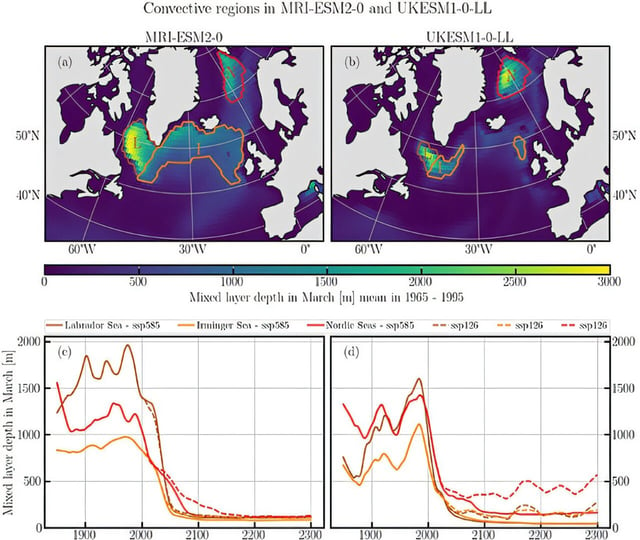Overview
- The peer‑reviewed analysis concludes an Amoc collapse is no longer a low‑likelihood event, elevating the urgency of deep emissions cuts.
- Across scenarios, 70% of high‑emissions runs, 37% of intermediate runs, and 25% of low‑emissions runs end in shutdown.
- Researchers estimate the threshold that commits the system to collapse could be crossed in roughly 10–20 years, with the full failure unfolding decades later.
- Observed trends show the circulation at its weakest in about 1,600 years and recent deep North Atlantic measurements declining in line with model projections.
- A major slowdown or collapse would shift tropical rainfall belts, drive extreme winters and summer droughts in western Europe, and add roughly 50 cm to regional sea levels, though timing and exact odds remain uncertain due to limited long‑run simulations, missing Greenland meltwater effects, and sparse observations.

